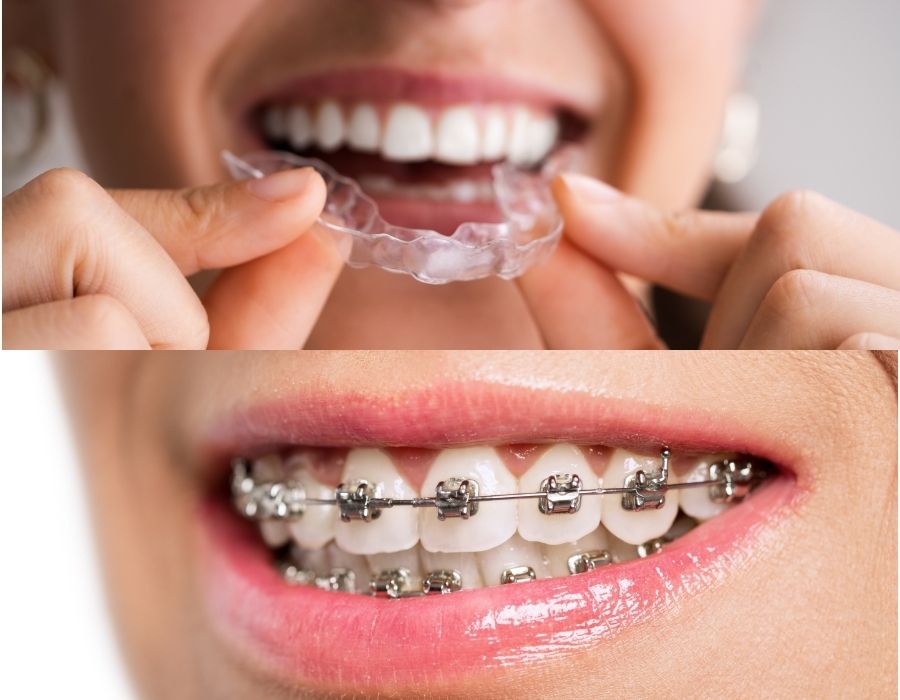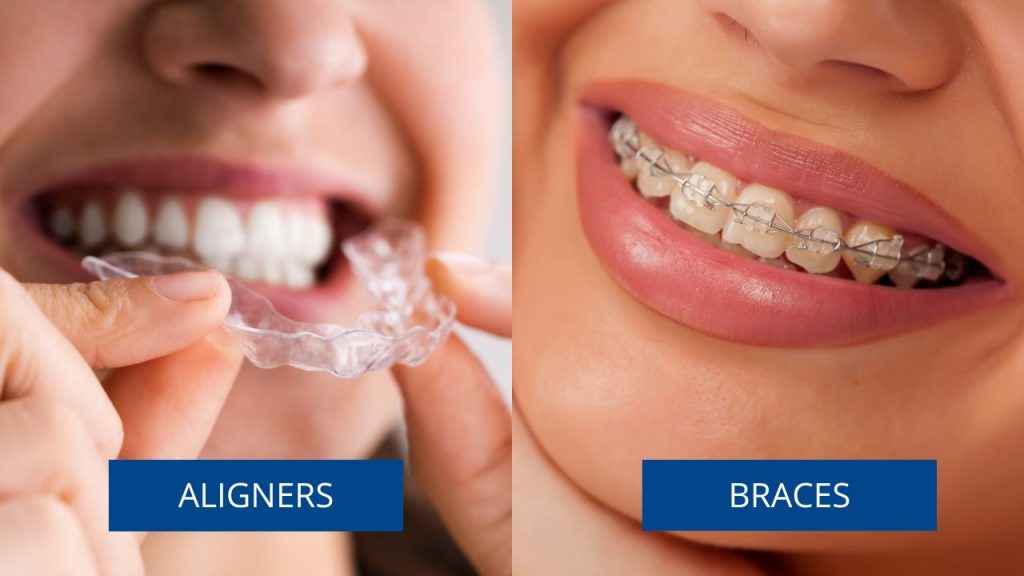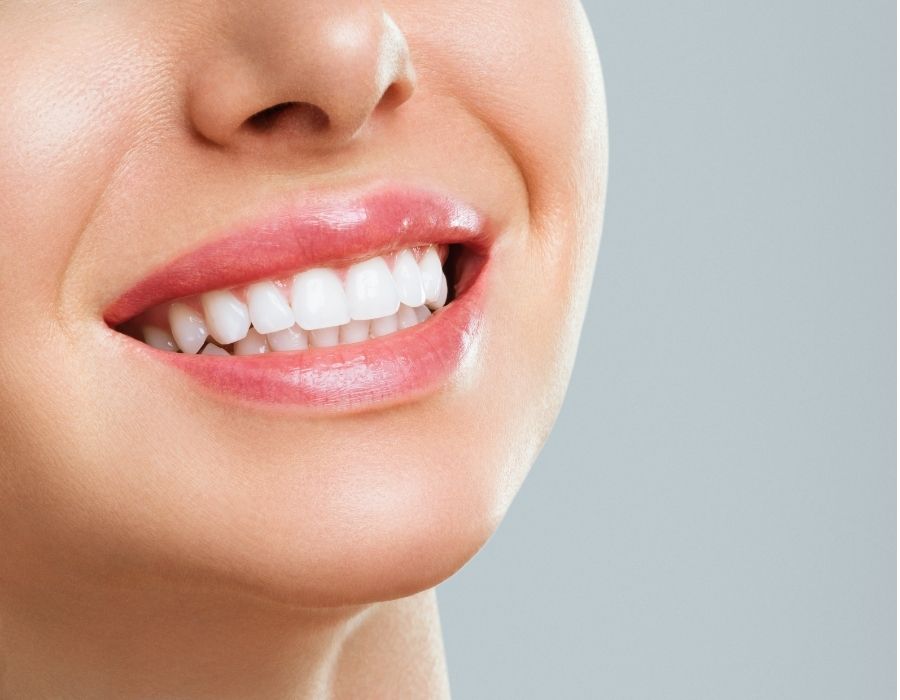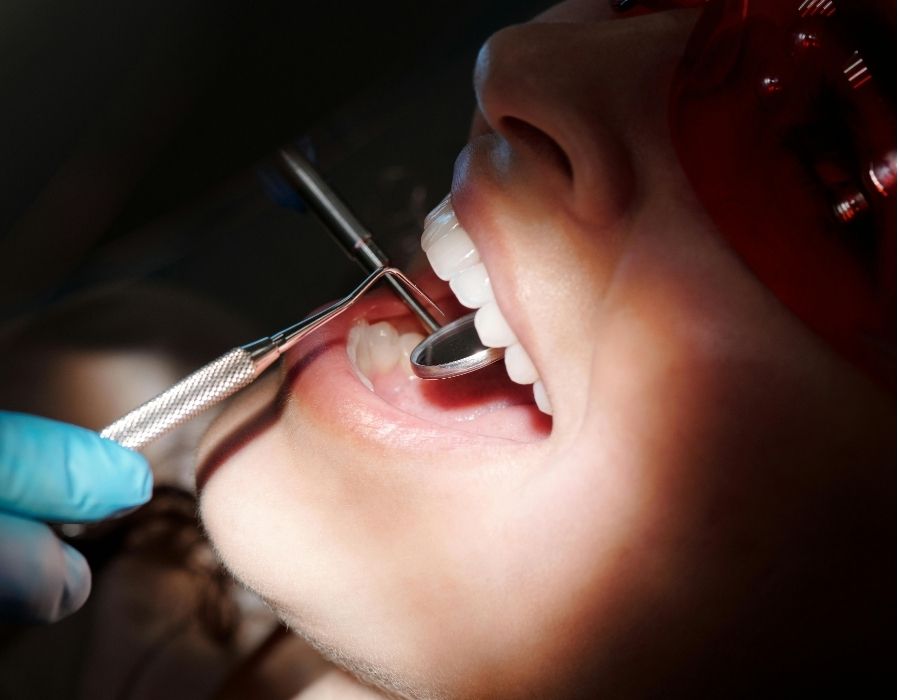Choosing between aligners and braces is a significant decision for anyone seeking orthodontic treatment in Bluffton, SC. Both options offer unique advantages and considerations. This comprehensive guide aims to provide valuable insights into the differences between aligners and braces, helping you make an informed choice tailored to your needs.
In Bluffton, residents have access to a range of orthodontic services, including traditional braces and clear aligners like Invisalign. Whether you’re considering the discreet appearance of clear aligners or the comprehensive correction capabilities of traditional braces, understanding the benefits and limitations of each can guide you toward achieving a confident, healthy smile.
Understanding Aligners and Braces

Aligners
Clear aligners, such as Invisalign, are custom-made, transparent trays designed to fit snugly over your teeth. They work by applying gentle, controlled pressure to gradually shift teeth into their desired positions. Each aligner is typically worn for one to two weeks before progressing to the next in the series. For optimal results, aligners should be worn for 20 to 22 hours daily.
Advantages:
- Discreet Appearance: Made from clear, BPA-free plastic, aligners are virtually invisible, making them a popular choice for adults and teens seeking a less noticeable orthodontic solution.
- Removability: Aligners can be removed for eating, drinking, brushing, and flossing, allowing for greater flexibility and ease in maintaining oral hygiene.
- Comfort: Without metal brackets or wires, aligners reduce the likelihood of mouth irritation and discomfort.
Braces
Traditional braces consist of metal or ceramic brackets affixed to each tooth, connected by wires and elastic bands. They apply continuous pressure to move teeth into the correct alignment over time. Braces are highly effective for addressing complex dental issues, including significant misalignments and bite problems .
Advantages:
- Effective for Complex Corrections: Braces can tackle a wide range of orthodontic problems, from overcrowding to severe bite issues.
- No Need for Patient Compliance in Wear: Since braces are fixed to the teeth, they work continuously without relying on patient adherence to wearing them.
- Variety of Options: Beyond traditional metal braces, options like ceramic (tooth-colored) and lingual (placed behind the teeth) braces offer aesthetic alternatives .
Key Differences Between Aligners and Braces

Appearance
- Aligners: Crafted from clear, nearly invisible plastic, aligners allow patients to undergo treatment discreetly. This makes them especially popular among adults and image-conscious teens who prefer minimal aesthetic disruption during orthodontic care.
- Braces: Traditional metal braces are visibly noticeable, though advancements like ceramic (tooth-colored) and lingual (behind-the-teeth) braces offer less conspicuous alternatives for those concerned with appearance.
Comfort
- Aligners: Designed from smooth, custom-fitted plastic, aligners minimize irritation to the inside of the cheeks, lips, and gums. Most patients report significantly less discomfort compared to braces, especially without sharp wires or protruding brackets.
- Braces: While effective, braces can cause tenderness, especially after adjustments. Brackets and wires may occasionally irritate soft tissues, requiring wax or other aids to relieve discomfort.
Maintenance
- Aligners: Since they’re fully removable, aligners simplify daily hygiene routines. Patients can brush and floss normally, while the aligners themselves are easily cleaned with gentle brushing or special cleansing solutions.
- Braces: Cleaning around fixed brackets and wires demands extra care to prevent plaque buildup and cavities. Special tools like interdental brushes, floss threaders, and water flossers often become essential for maintaining good oral hygiene.
Diet Restrictions
- Aligners: Because aligners are removed during meals, patients can continue to enjoy their favorite foods without worry.
- Braces: Certain foods—such as sticky candies, crunchy snacks, or hard fruits—are restricted to prevent damage to brackets or dislodging of wires.
Treatment Duration
- Aligners: Treatment timelines typically range from 6 to 18 months, depending on individual needs and patient compliance.
- Braces: More complex cases may require 18 to 24 months or longer. The continuous pressure applied by braces is often necessary for addressing severe misalignments.
Effectiveness
- Aligners: Best suited for mild to moderate alignment concerns, such as minor spacing, crowding, and simple bite corrections.
- Braces: The gold standard for complex orthodontic challenges, including severe crowding, large gaps, rotations, and significant bite issues (overbite, underbite, crossbite).
Making the Right Choice in Bluffton, SC

Selecting between aligners and braces is a significant decision that depends on various personal factors. Here’s a guide to help you consider the key aspects:
1. Complexity of Dental Issues
- Braces: Ideal for addressing complex dental problems, including severe misalignments, significant bite issues, and intricate tooth movements.
- Aligners: Best suited for mild to moderate orthodontic concerns, such as minor crowding or spacing.
2. Lifestyle and Aesthetics
- Aligners: Offer a discreet appearance, making them a popular choice for adults and teens concerned about aesthetics. Their removability allows for flexibility during meals and special occasions.
- Braces: While more noticeable, options like ceramic braces provide a less conspicuous alternative to traditional metal brackets.
3. Budget and Insurance
Costs can vary based on treatment complexity and duration. Many orthodontic practices in Bluffton accept a range of insurance plans and offer flexible financing options:
- Miler Orthodontics: Provides affordable payment plans and accepts most insurance providers.
- Maginnis Orthodontics: Offers free consultations and works with various insurance plans to accommodate patients’ financial needs.
- Southern Oak Dental: Offers Invisalign treatments with financing options to fit different budgets.
4. Commitment to Treatment
- Aligners: Require discipline to wear them for the recommended 20 to 22 hours per day. Consistent wear is crucial for effective results.
- Braces: Fixed appliances that work continuously without relying on patient compliance in wearing them, though maintaining oral hygiene is essential.
By considering these factors and consulting with local professionals, you can make an informed decision that aligns with your dental needs and lifestyle preferences.
Choose the Path to Your Best Smile with Expert Guidance

Both aligners and braces are effective orthodontic treatments, each offering distinct advantages tailored to different needs. Aligners provide a discreet, removable option that suits individuals prioritizing aesthetics and flexibility, while braces offer a reliable solution for complex dental issues requiring precise tooth movement.
Your decision should align with your specific dental requirements, lifestyle, and personal preferences. Consulting with a qualified orthodontist in Bluffton, SC, will provide personalized guidance, ensuring you embark on a treatment journey that leads to a healthier, more confident smile.








